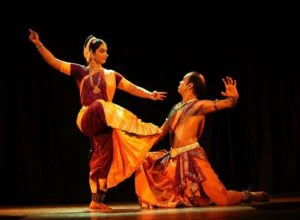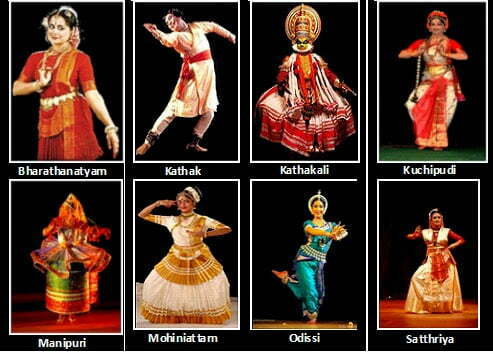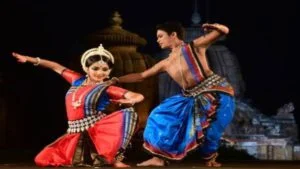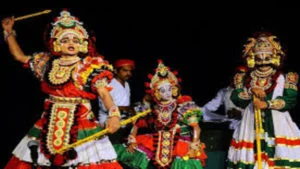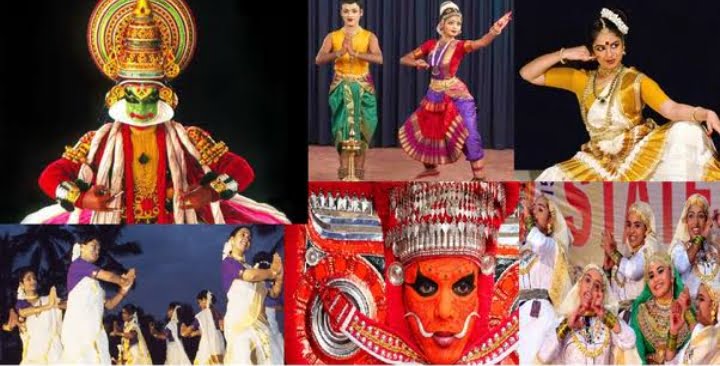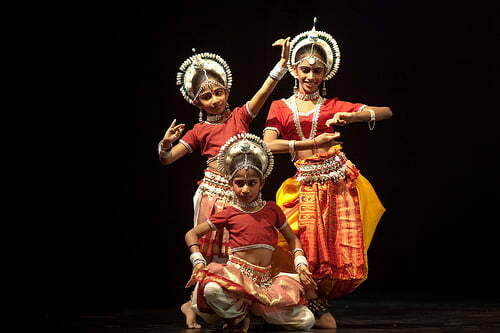India’s heritage and culture bring about a lot of admirable and heart-warming traditions and beliefs. The people have rooted these traditions deep in their hearts. Despite the developing time, people continue to follow and respect their lineage. Guru-Shishya tradition is one major tradition that has existed in the history of India. It continues to be in practice even today. One can easily witness the essence, especially in classical dance.
The Guru-Shishya tradition is common in Indian performing classical dances where the guru (teacher) is equivalent to god. It is the guru that helps his/her shishya find purpose in life and achieve the final goal of self-enlightenment. A guru is considered to be a mentor who shares his/her wisdom. It is only by the guru’s presence, and following the guru, the shishya can gain wisdom and find meaning in life. This tradition rests on one simple ideology in the dance form: the guru is the last word for discipline.
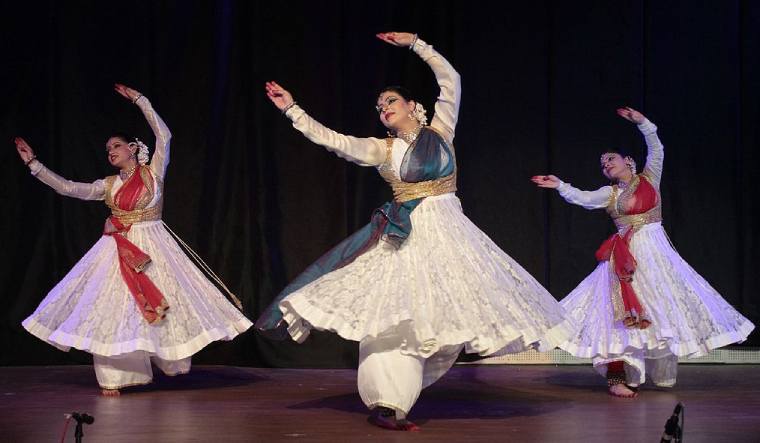
This practice finds its beginning around 500 BCE, and even after hundreds of years, the tradition is equally important today as it did back then. Since this tradition has such a rich history, there have also been some exemplary guru-shishya pairs in classical dance who have shown the world the fruits of success that come with following and believing in this practice. Some of these pairs are:
Famous Guru Shishya Jodis:
Raja and Radha Reddy- Bhavana and Yamini Reddy (Kuchipudi)
Raja and Radha Reddy are the great Kuchipudi dancers and choreographers of India. They are renowned for their vigor and elegance in this dance form. With over 5 decades of dancing career, this is the first Indian duo dancer to dance at Festivals of India in the UK, Bangladesh, and in the USA, and at the International Dance Festival of Avignon in Austria and France. This couple undertook the duty of being gurus after the birth of their daughters Yamini and Bhavana Reddy.
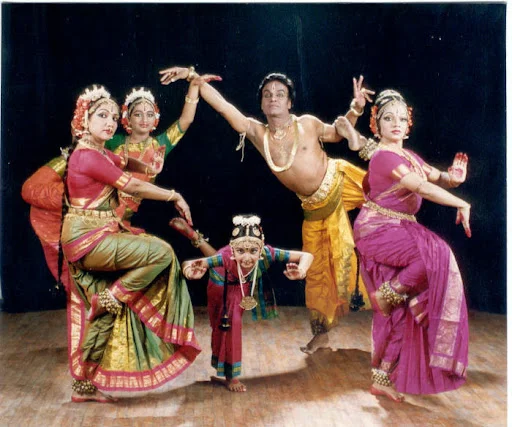
The Reddy sisters are considered to be an ideal shishya pair, and the reasons for this are very evident. Yamini performed her first dance at the age of three, and since then, she has been performing and touring all around the world. The Mayor-awarded Yamini, a Golden Key in Dublin, and Fort Lauderdale for her excellence in Kuchipudi. Bhavana, on the other hand, is India’s one of the leading young Kuchipudi performers. Her grace in this dance form has given her opportunities to perform in films globally and at Grammy’s after-party.
Birju Maharaj- Shovana Narayan (Kathak)
Guru Birju Maharaj is considered to be a very important part of the Indian dance form, Kathak. Being the descendant of the Maharaj family of Kathak dancers, Birju Maharaj has trained a lot of shishyas. One of his most admirable shishya is Shovana Narayan, whose name is still with Birju Maharaj.
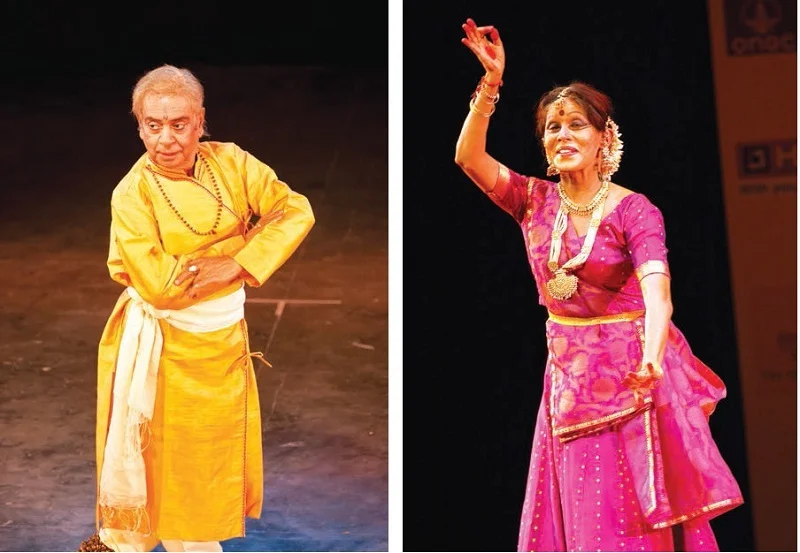
Said to be the “Kathak Queen” of India, Shovana has reached some unprecedented heights with her discipline and training from her guru. Fusing various other major dance forms like Western Classical Ballet, Tap Dance, and Spanish Flamenco with Kathak, Shovana Narayan is undoubtedly a living legend in performing dance and music. Today, much like Guru Birju Maharaj, Shovana is famous for being both a performer and a guru. One major accomplishment of Shovana as being the shishya of Birju Maharaj is that she was able to fulfill her guru’s dream of making Kathak a globally recognized form of dance.
Mrinalini and Mallika Sarabhai (Bharatnatayam)
Mrinalini Vikram Sarabhai was an Indian classical dancer and a guru. Founder of a training institute in the fields of dance, drama, music, and puppetry, Mrinalini had trained over eighteen thousand students in both Kathakali and Bharatnatyam. However, Mrinalini’s most commendable shishya is her daughter Mallika Sarabhai.
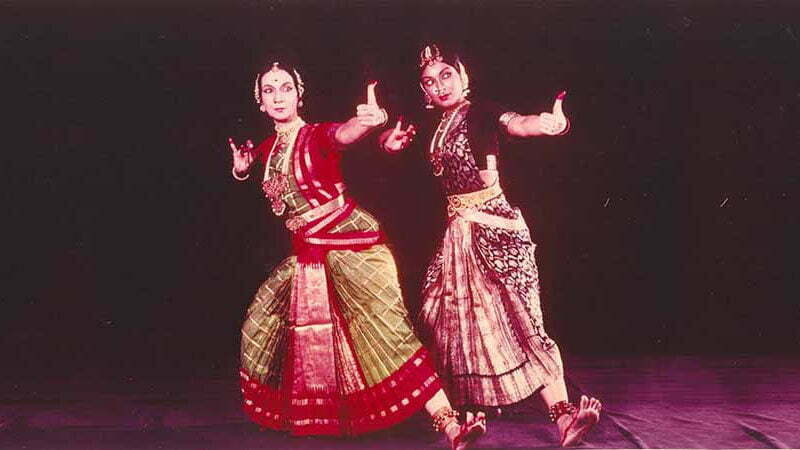
As an accomplished performer of Bharatnatyam and Kuchipudi, Mallika’s most honorable act as the shishya of Mrinalini is by carrying Mrinalini’s legacy of raising awareness on dowry deaths. Mallika masters the art of using her skills to make a social change and transformation. She has done so with her dance productions, Memory is a Ragged Fragment of Eternity (on dowry deaths), Ranmalpur, and various others.
Kelucharan Mohapatra- Sonal Mansingh (Odissi)
Kelucharan Mohapatra was a renowned Indian classical dancer. He is a guru who is famous to have popularized and reviving the Indian dance form Oddisi in the 20th century. Born into a family of artists, guru Kelucharan valued that dancing is not a mere entertainment form but a source to inspire and elevate people. His shishya Sonal Mansingh, just like him, is a dancer and Guru of Bharatanatyam and Odissi.
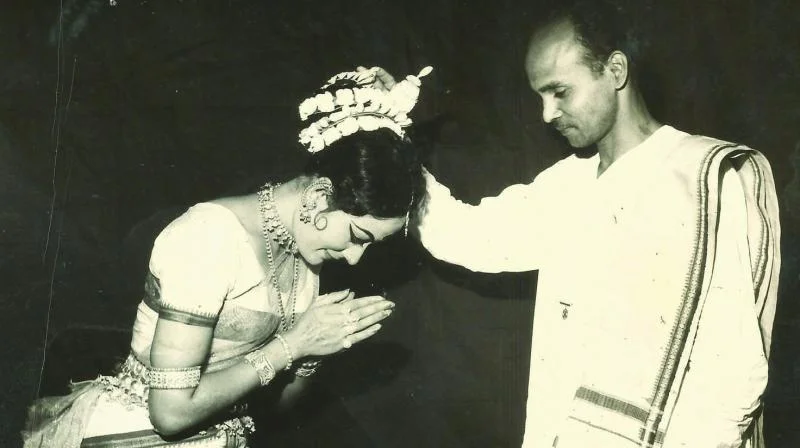
Sonal Mansingh is credited with raising questions on contemporary world issues, like environmentalism and women’s issues. Her dance choreography connects deeply with Indian mythology. Moreover, this visionary dancer performs and teach both in India and abroad.
Ramankutty Nair- Kalamandalam Gopi (Kathakali)
Kalamandalam Ramankutty Nair was a performer of Kathakali, a major form of classical Indian dance. Born into a family with no kathakali lineage, he mastered the dance form and performed for over seven decades. During his period as a guru, Ramankutty sculpted various disciples. The most eminent of whom is Kalamandalam Gopi. She is popular with Gopi for showcasing dramatic and romantic roles when performing Kathakali. Some of which include Nalan, Karnan, and Rukmangadan.
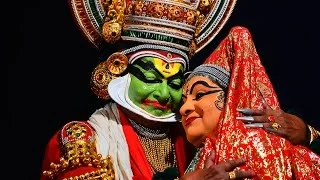
What is impressive about this shishya is that Gopi is also an intense preacher of dance, just like his guru. During his 80th birthday, Gopi chose to perform a Dharmaputra in KirmiraVadham. This role is one of the most physically demanding roles as it requires long periods on stage and an extremely slow tempo. Kalamandalam could be considered Ramankutty’s greatest shishya of all times, and Gopi has lived up to that title.
Final words
These are just some of the top pairs in the guru-shishya tradition. Many other pairs have some very honorable stories to share with the world. Despite some changes in the dynamics of this tradition due to the introduction of the formal education system, the guru-shishya tradition continues to be of importance in the classical dances of India.
Share with your friends

